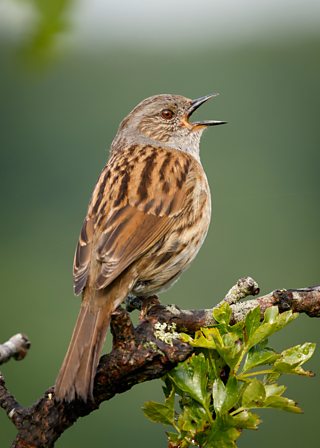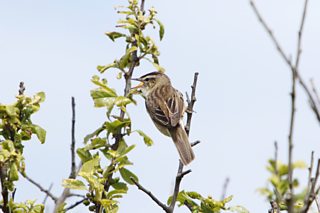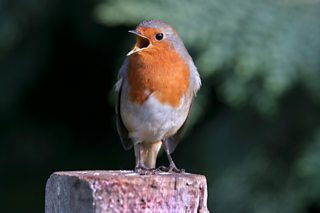The first songs are the best songs - the dawn chorus
BTO
Partner organisation of the Watches
By Paul Stancliffe, Media Manager at BTO
March, April and May are (perhaps along with many other people) my favourite months of the year; the spring months. The first inklings of spring begin in early March with a noticeable increase in birdsong. Robins and song thrushes are amongst the first to get going this early in the year but as the month progresses more birds begin to tune-up with dunnocks and blackbirds joining the party.

The often overlooked dunnock is one of the first birds to announce the morning. Photo by Nathan Guttridge
But why do birds mainly sing in the morning? Why not all day? The answer is in the purpose of the song. The aim is to find, and hold, a breeding territory and to successfully hold onto the chosen plot. Proclaiming ownership through song is how it’s done. Once a territory is found the next thing to do is to attract a mate to share it with, and hopefully rear a brood of youngsters. Again, song is the way to many a female bird’s heart, with some evidence that the best singers get the best female, increasing their chance of a successful breeding season.
The cool thin air of the early morning transmits sound much better than the warmer, thicker air later in the day. It makes sense to utilise that cooler air to get your song heard. The dawn chorus begins just as the first streaks of daylight herald the end of the nightshift and it is the larger eyed species that can be heard first. Song thrush, robin and blackbird are followed by blackcap, garden warbler and skylark. By the time willow warblers and chiffchaffs join the melee the dawn chorus is well underway. Woodlands are probably the best habitat in which to listen to a dawn chorus, but a reedbed dawn chorus can be almost as spectacular – here, reed and Cetti’s warblers are often the first to sing to the backdrop of a booming bittern if you are lucky. As the morning progresses, sedge warblers, reed buntings and cuckoos join in and the whole experience begins to build.

Sedge warblers join other warblers and buntings as the morning progresses in a reedbed. Photo by John Proudlock
You don’t have to go far to enjoy a dawn chorus. There might not be as many species singing but a garden dawn chorus is no less enjoyable because of it – blackbird has arguably one of the most beautiful songs of any British bird.
Timing, however, is key. The dawn chorus peaks between mid-May and starts to wane soon thereafter. Don’t be put off by missing the peak though, as some of our garden birds will sing throughout the summer, both in the morning and again in the evenings. And with fewer birds singing it is a great time to learn the songs of those that are, in readiness for next spring.

The familiar and comforting song of the Robin is one of the first to learn in your garden. Photo by John Harding
